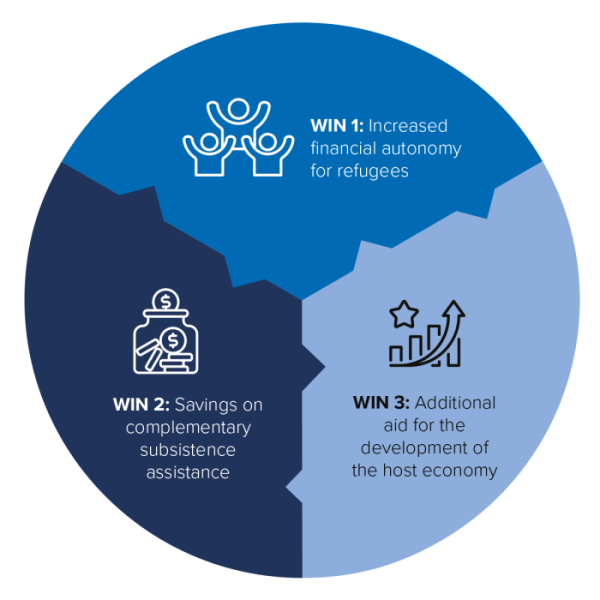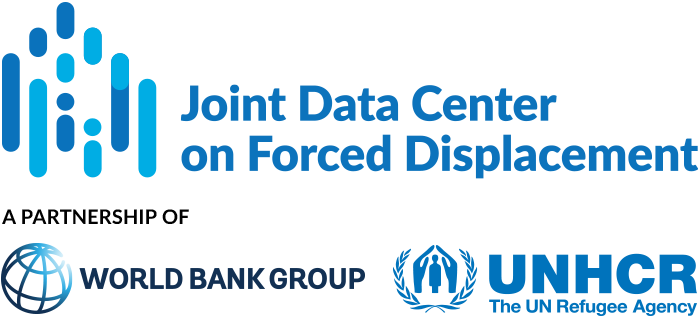Refugee self-reliance: a benefit for the host communities
How much does it cost to meet refugees’ subsistence needs? A joint World Bank-UNHCR report estimates the benchmark cost across low- and middle-income refugee-hosting countries to be almost US$62 billion. In other words, this is how much it would cost to bring all refugees in those countries to the global poverty line in a scenario where refugees are not earning any income.
Going one step further, we learn that refugees’ earnings through current income-generating activities reduce the amount required to around US$22 billion. Still a very high figure in a context of increasingly scarce fiscal resources and financial pressures.
How can we further reduce these costs? The same report provides an interesting estimate: if labor market restrictions were eased to an extent to which refugees earnings are at par with that of the host population, the amount needed in complementary assistance would fall to US$5.7 billion, a remarkable 74 percent reduction of the required amount.

Self-reliance through jobs, income-generating activities, and social and economic links with the host community is therefore the key to reducing refugees’ dependency on assistance. Stimulating their productivity and earning capacity also leads to greater tax revenues, further alleviating pressures on the host community. Yet, recommendations on self-reliance and the full inclusion of refugees in labor markets are often met with political resistance. The 2022 Global Refugee Work Rights Report found that at least 55 percent of refugees live in countries where work rights are significantly restricted in practice.
This happens despite plenty of evidence showing that the labor market consequences of forced displacement in the host communities are small, often short-term, and in certain contexts even positive. In Colombia, for example, granting work permits to large numbers of Venezuelan refugees and migrants has led to negligible effects on formal employment. In Brazil, the influx of Venezuelans did not affect the fiscal balance of the hosting region; and while in the short-term unemployment increased among women and low-skilled workers, other host groups experienced positive earning effects.
Similar evidence is also found in large refugee contexts in Sub-Saharan Africa and the Middle East. A recent book published by the World Bank looks at countries as different as Colombia, Ethiopia, Jordan and Uganda. Once again, the findings indicate that hosting refugees has modest or even positive effects on labor markets overall. Host workers in specific sectors often benefit more than others: Ethiopian and Ugandan farmers, for example, record significant consumption gains from refugee influx. At a global level, an analysis was conducted on 59 studies on the economic effects of forced displacement on host communities. The majority of results show an increase in household well-being while in most instances forced displacement did not impact wages among host populations.
Inclusive policies can improve the dignity and financial autonomy of refugees while protecting and even positively contributing to their host community. They can also free domestic and international resources to the most vulnerable and for the development of the affected economies. This virtuous circle, if replicated on a large scale, may lead us to stop asking what the cost of refugee assistance is, and instead encourage us to reflect on how the community can best benefit from hosting those forcibly displaced.

Aissatou Maisha Dicko
Head of the World Bank-UNHCR Joint Data Center on Forced Displacement
Literature review
Our literature review delves into recent research on forced displacement in Chad, Colombia, Jordan, Kenya, Turkey, and Uganda, focusing on self-reliance and jobs and looking at their relation with microfinance, mental health, education, assistance programs, and poverty.
Explore our latest literature review and previous editions, organized by categories and countries, on our website.


